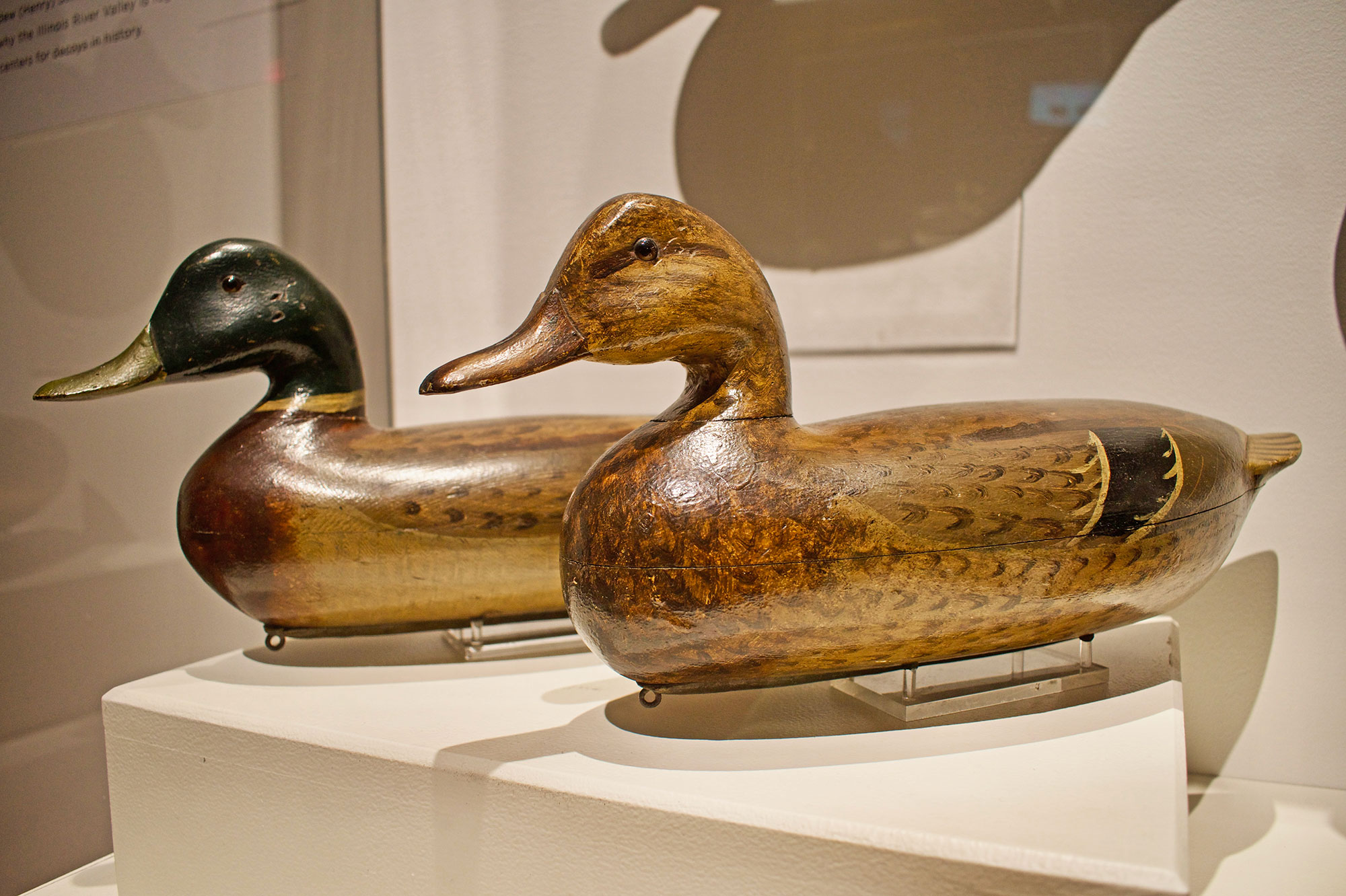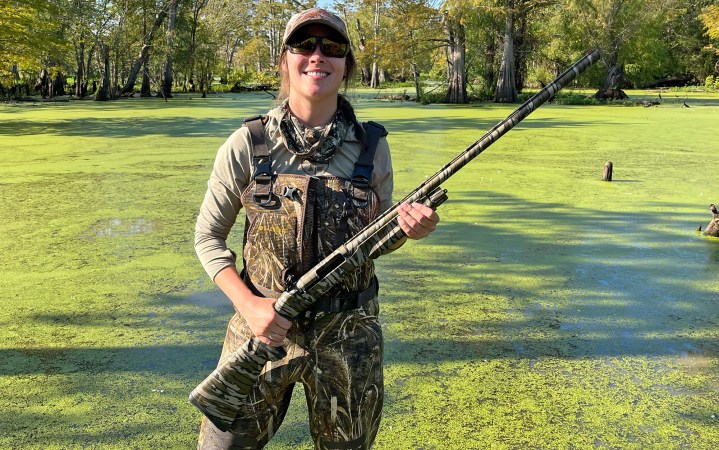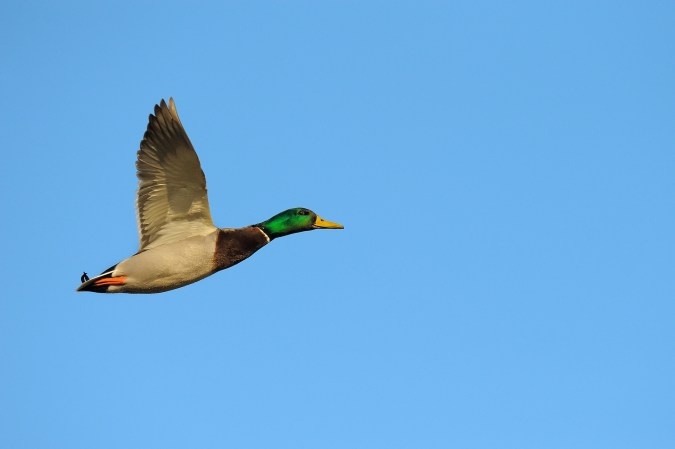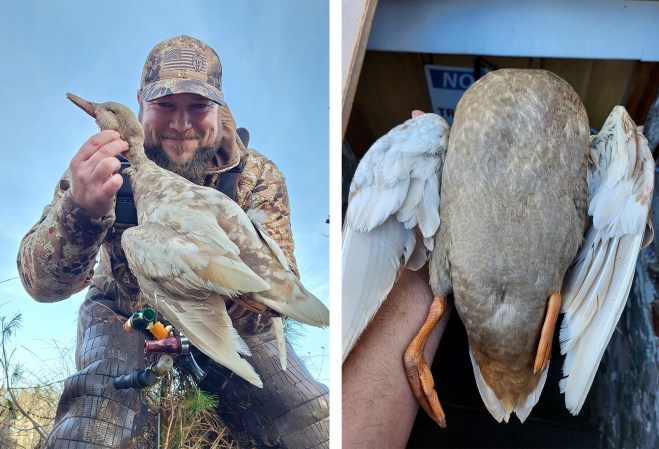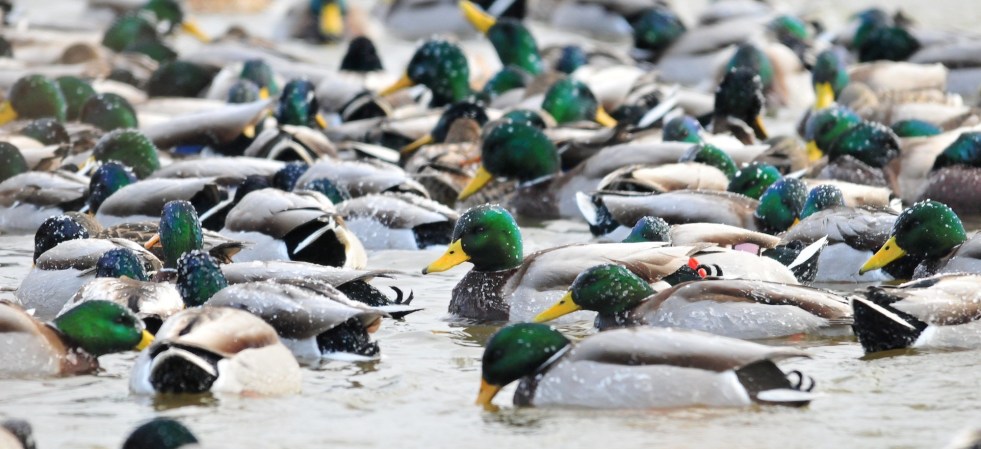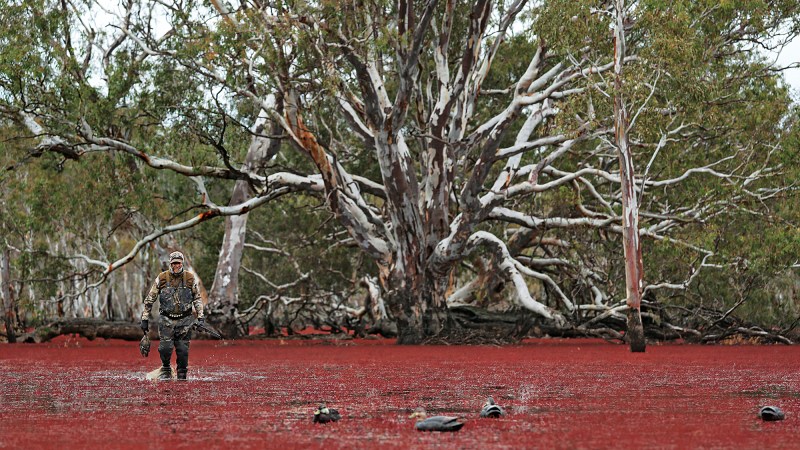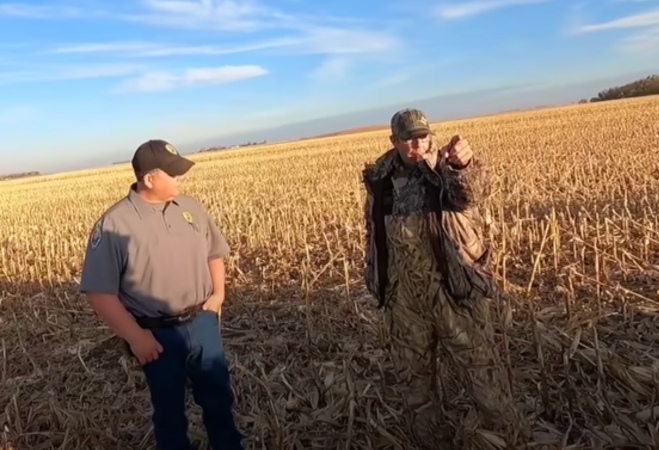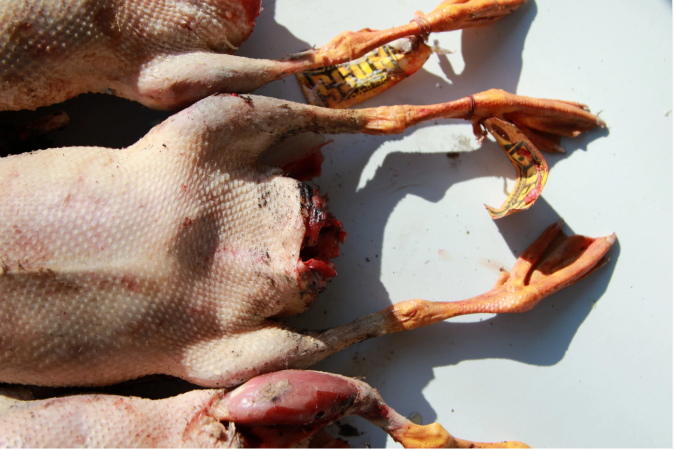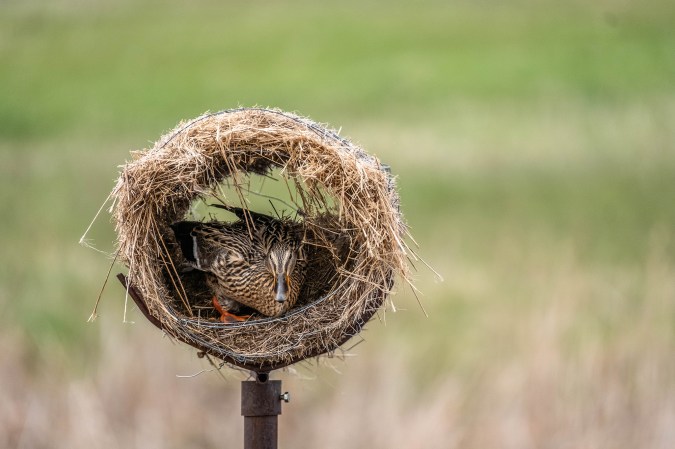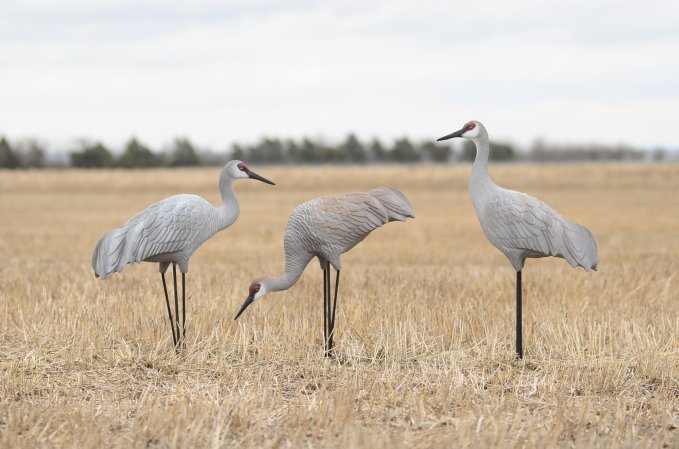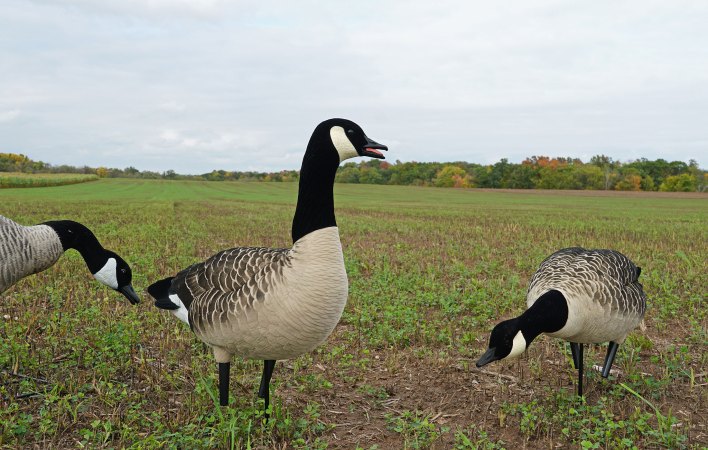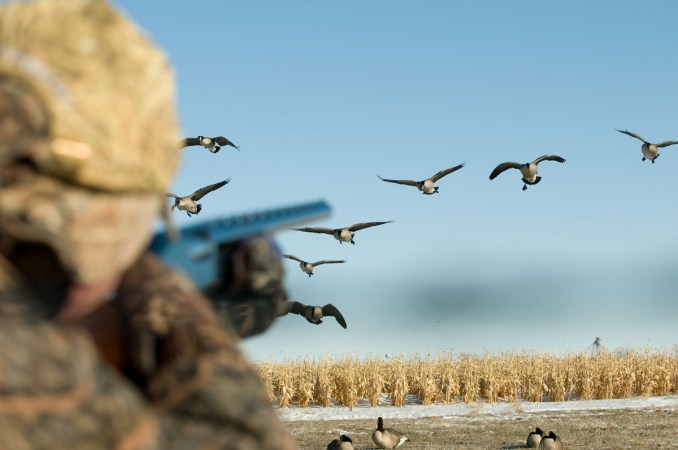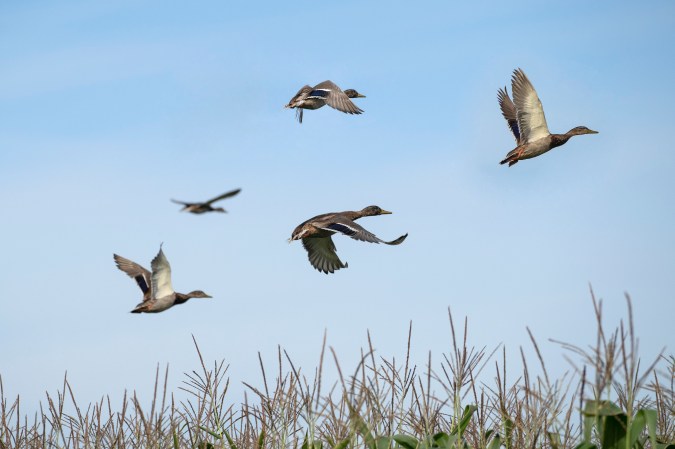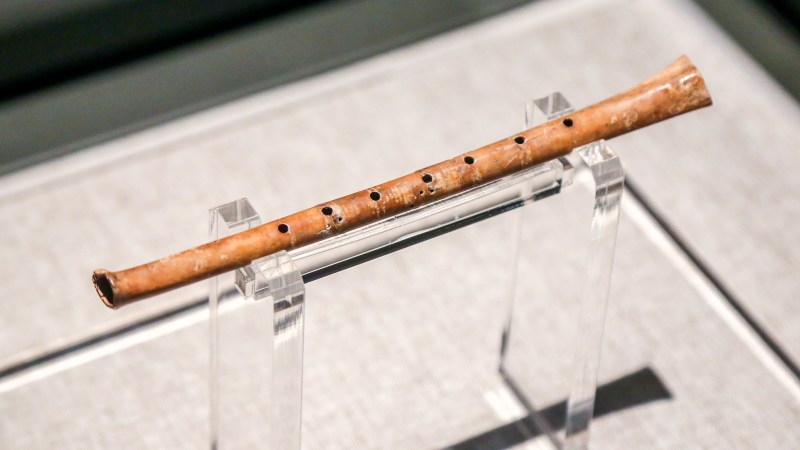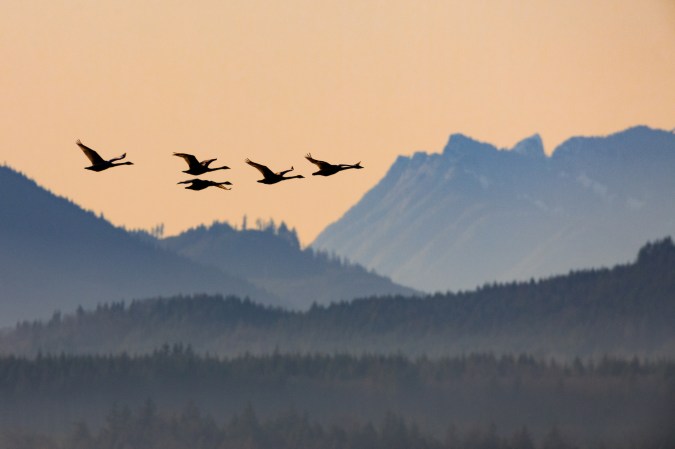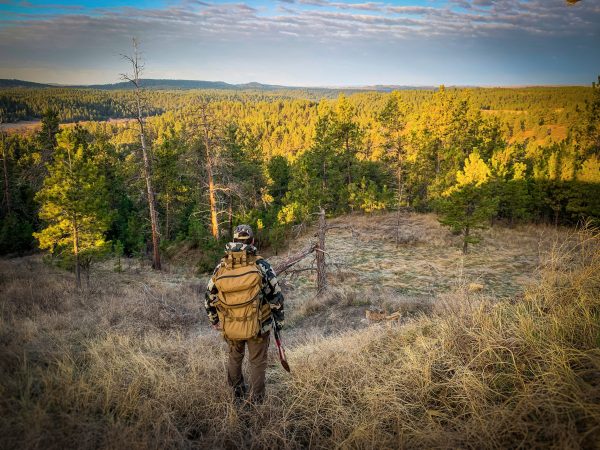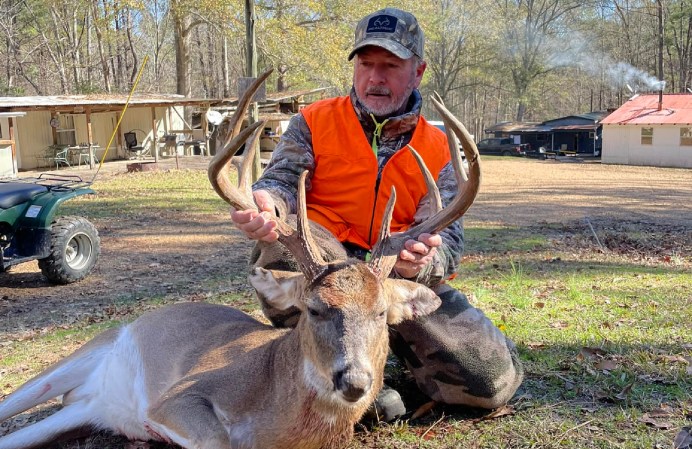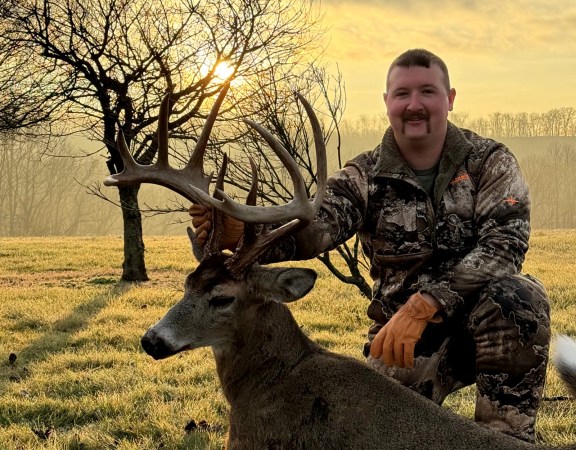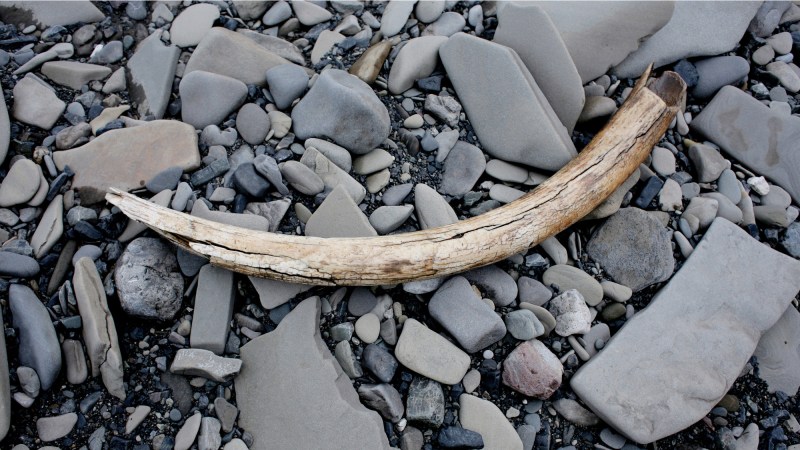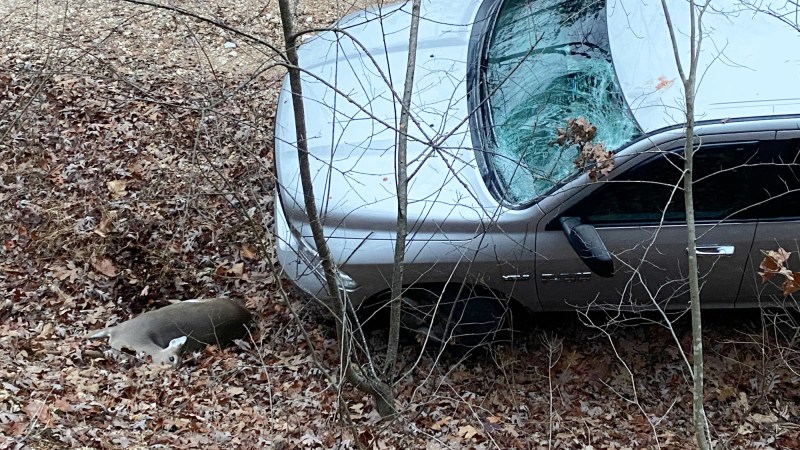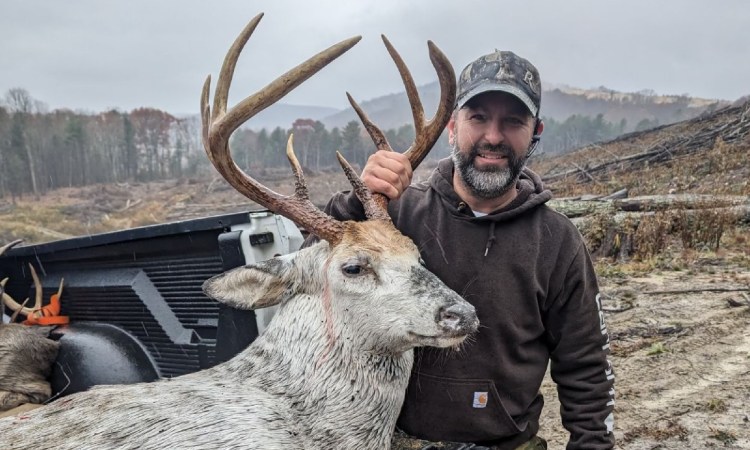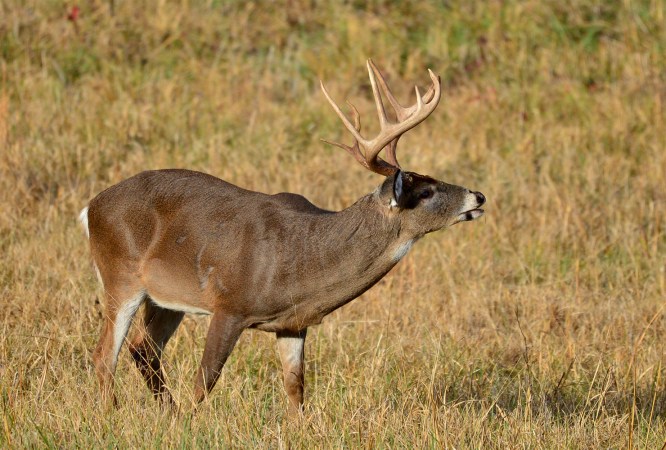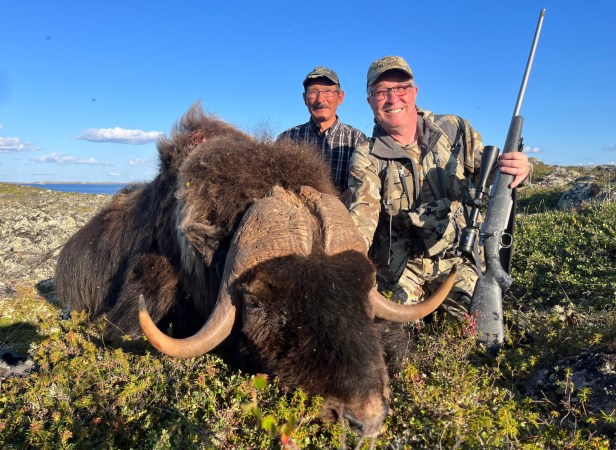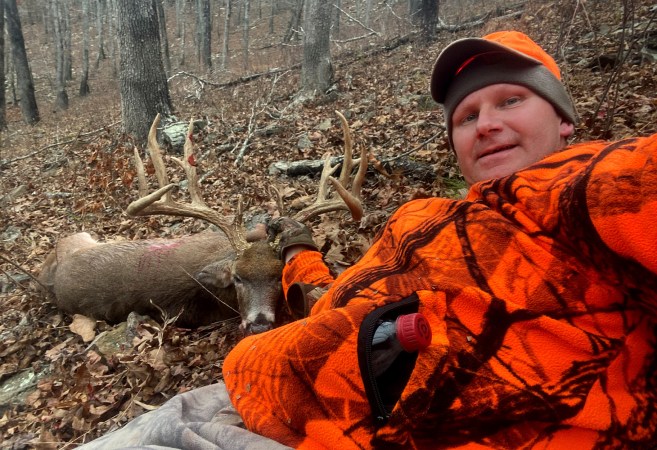Randy Root is a master of mallards. As a kid, he grew up on the south side of Chicago, but in 1960 his family bought several acres along the east side of the Illinois River not far from Peoria. Root expanded the property in the decades that followed, building the infrastructure needed to flood hundreds of acres of standing corn. His duck club, Mallard Farms, became widely regarded as a premiere venue to shoot greenheads in central Illinois.
Season after season, club members killed scores of ducks — 98 percent of which were mallards, according to club records. A hard freeze would seemingly push every mallard in the Illinois River Valley to Root’s corn. He was a meticulous manager of ducks. Truck headlights had to be turned off when you pulled onto the lane that led to the clubhouse. Hunters were not allowed to drive ATVs to their blinds until a majority of the roosting ducks had flown out of flooded impoundments. Shooting hen mallards cost members a penalty fee. There was no shooting into big flocks. And when it was your turn to shoot, don’t miss … unless you wanted to be disciplined over an open radio channel for all to hear. The whole idea was to get in and get out with minimal disturbance to the ducks.
“When we first started, Randy, our two sons, and I lived in the clubhouse,” says Root’s wife, Nancy. “Every morning our hunters would come in the door, so I’d throw on a robe, put the coffee on, and get the boys up. All my girlfriends thought I was crazy to put up with that, but I really didn’t mind.
“I mean, there were some days that I could have done without a bunch of men coming into my kitchen that early, but I have the right disposition for that. And I knew how Randy was [then]. Our two boys are just like him. But instead of decoys and ducks, it’s wine collections and finance.”
Root sold his club to members Lee Graves and Jim Bourazak prior to the start of the 2023 duck season, but he’s still a strong presence at the club and always will be. Root, now 79, is passionate about the history of duck hunting, specifically hand-carved decoys. And it’s this passion that has helped create one of the most impressive traditional decoy collections that is viewable by the public. That collection is held at the expanding Center for American Decoys.
The Beginning of a Decoy Collection
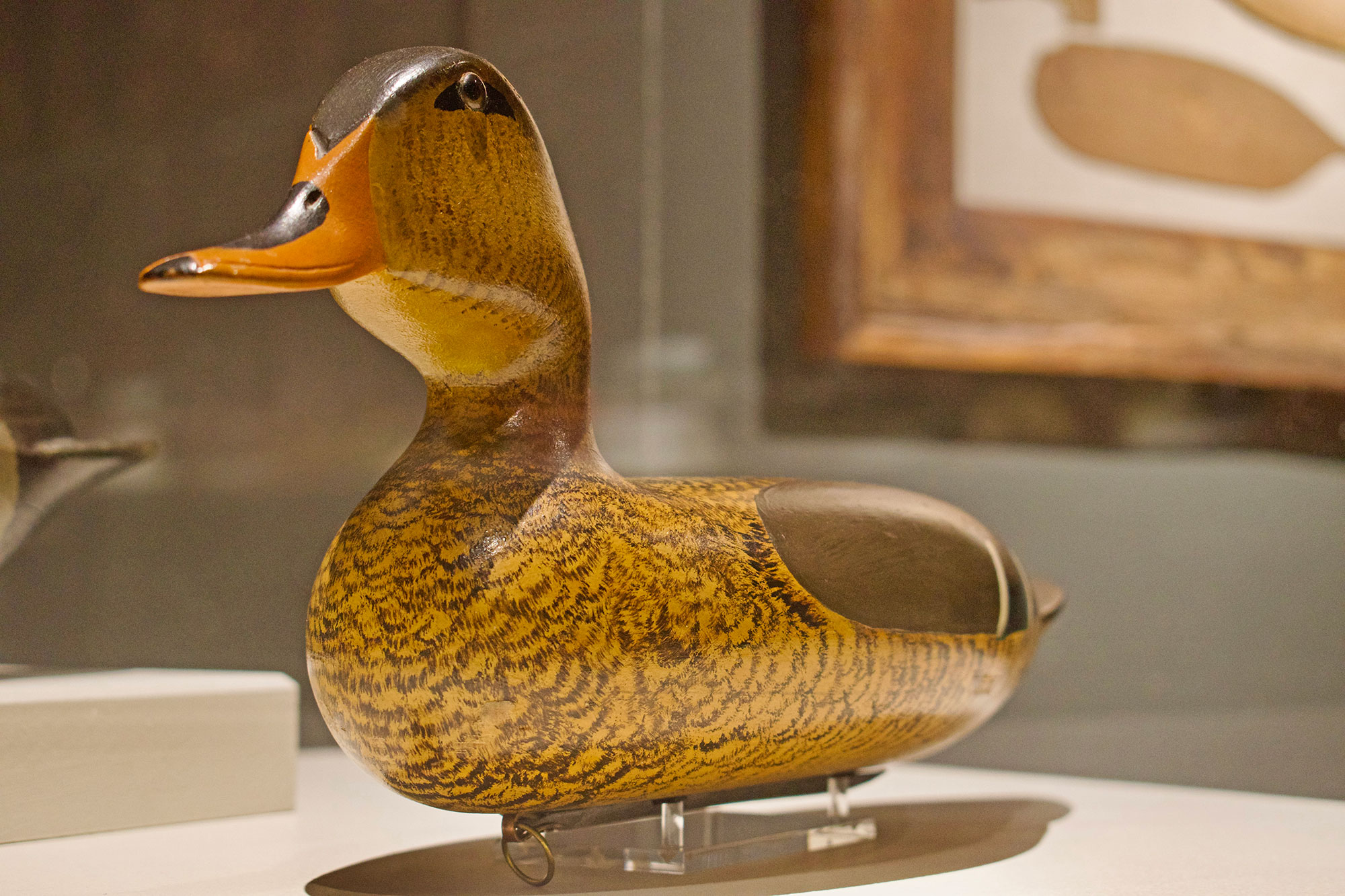
Photo by Joe Genzel
In 1966, the Illinois River flooded and after receding, it left a wooden decoy on the bank of Root’s property. A friend discovered the decoy and brought it to Root.
“It was such a nice looking bird, I wanted to know who carved it,” says Root. “I saw an advertisement in Ducks Unlimited for a decoy guide put out by Hal Sorenson in Burlington, Iowa, and sent for that. That’s when I became interested in the art of the decoy.”
He found out the decoy was made by Hiram “Hy” Hotze, a carver from Peoria born in the late 1800s. Root soon discovered that there were hundreds of decoy makers from the Illinois River Valley, including Robert Elliston (Bureau), Bert Graves (Peoria), Charles Perdew (Henry), Charles Walker (Princeton), and Charles Schoenheider Sr. (Peoria), considered the Big Five of IRV carvers.
Root befriended Joe Tonelli, another hunter and collector, and the two men began to amass decoys from these carvers and others. With the help of the late Merle Glick, an expert on Illinois folk art, and collector Thomas K. Figge, Root oversaw the creation of a decoy exhibition and catalog called the “Wooden Bird” in 1988 at Lakeview Museum in Peoria.
“If that Hotze decoy had not been found on Randy’s property, I don’t know that the Center for American Decoys would exist,” says Zac Zetterberg, curator of the Center for American Decoys at the Peoria Riverfront Museum. “Randy is the chief advisor for the decoy exhibit, which showcases one of the most complete collections of Illinois River Valley decoys [that’s open to the public] in the country.”
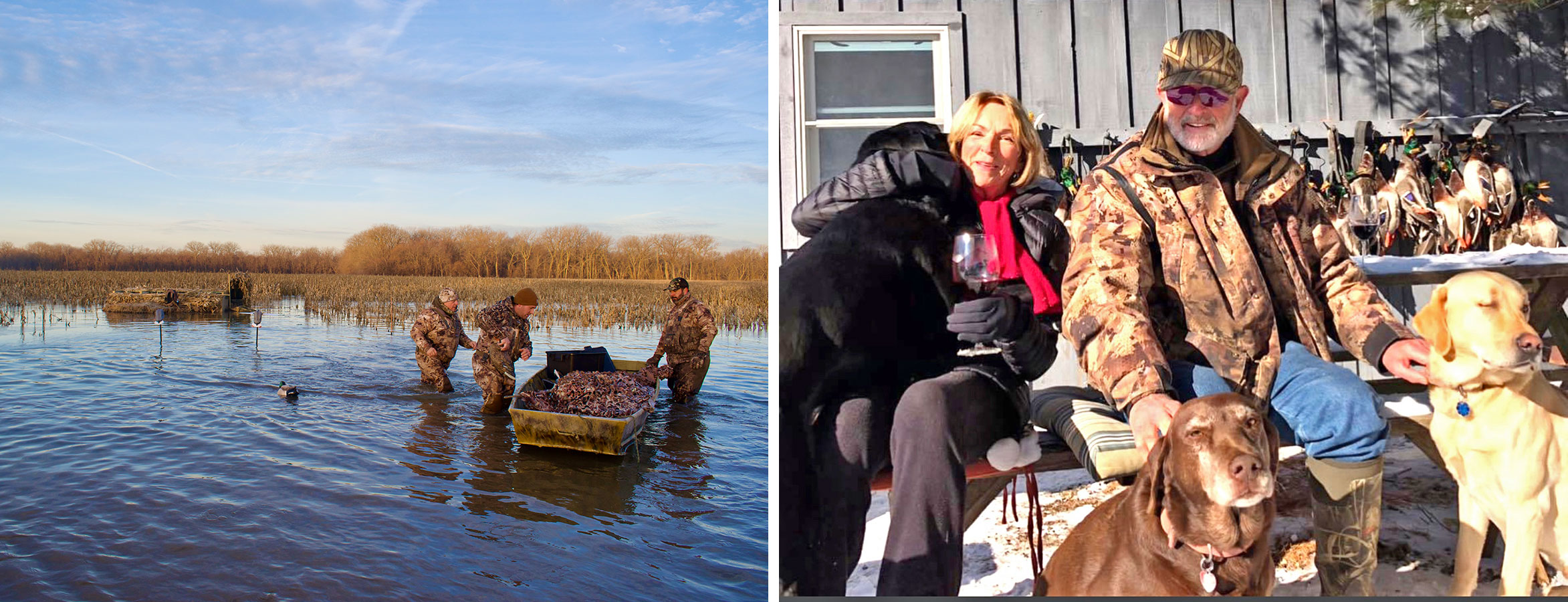
Photo by Joe Genzel
When the Riverfront Museum in downtown Peoria opened in 2012, many of the decoys from the museum’s permanent collection were placed in storage. Knowing the decoys had been sitting untouched for a few years, Root called the museum’s president and CEO John Morris and encouraged him to put on a showcase called American Decoy: The Invention. It’s regarded by many collectors as the most comprehensive museum decoy exhibition to date, and it ultimately led to the establishment of the Center for American Decoys.
“Most art doesn’t have a practical use, paintings hang on walls. But these decoys served a purpose,” Root says. “At the same time, they hold a significant value to collectors and duck hunters alike.”
IRV Waterfowl Hunting History
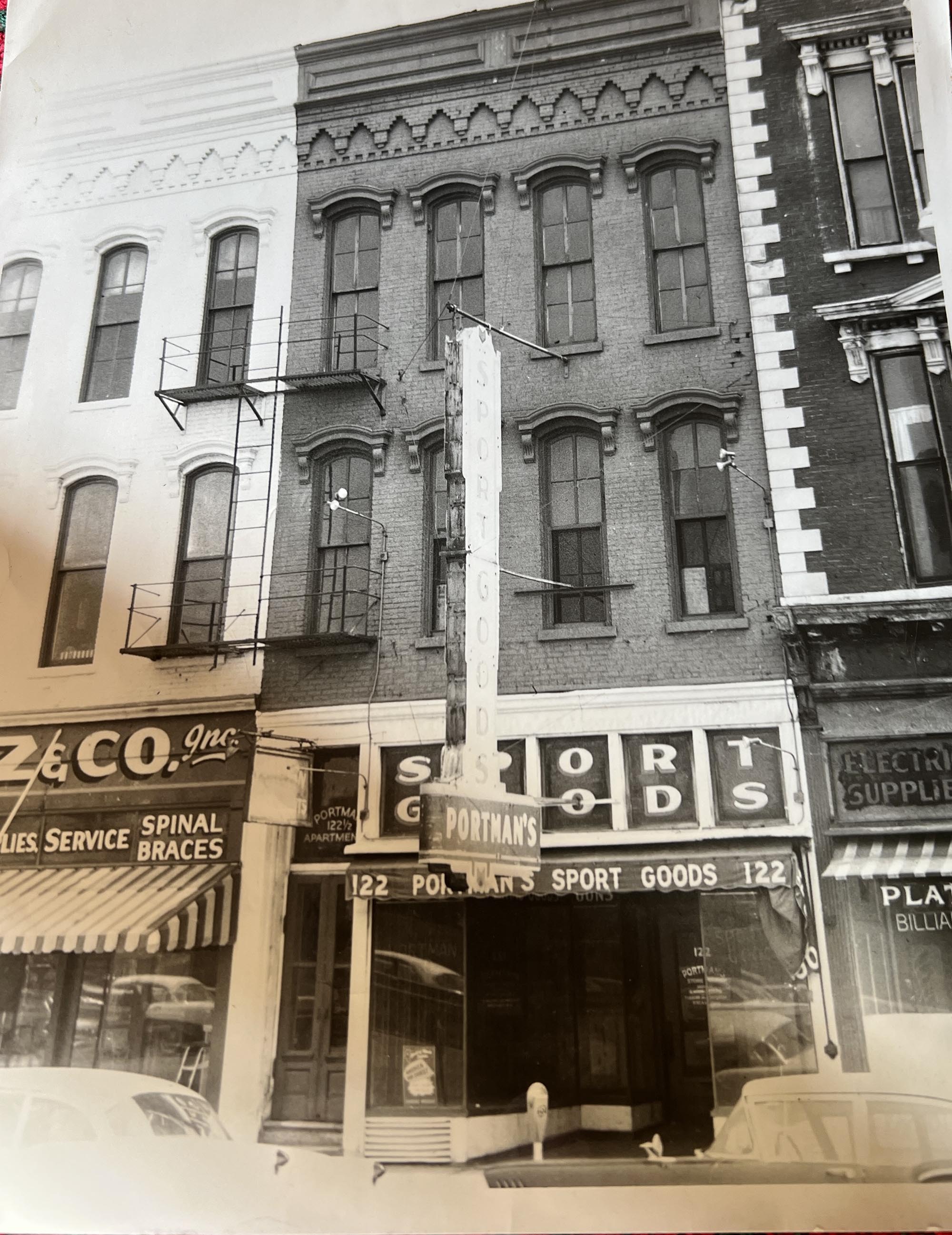
Outdoor Life
Even after the passage of the Migratory Bird Act in 1918, which outlawed the practice of killing ducks to be sold commercially, folks were still market hunting illegally in the IRV. Birds were sent to restaurants in St. Louis and Chicago. Hunters could earn as much as $1.25 for a pair of mallards (the equivalent of about $23 today). According to Illinois State Museum documents, one of the largest recorded take of ducks occurred in 1901 when three hunters killed more than 3,000 birds in eight days near Bath.
In an excerpt from his book The Last of the Market Hunters, Dale Hamm, an Illinois hunter who continued to illegally hunt ducks out of season, sell birds to restaurants, and trespass onto private clubs to poach game into the 1940s, described what a morning of hunting the IRV was often like: Back in the early days, the Sangamon Bottoms was the Home of the Mallard. More ducks used to come down that flyway than any other in the country. Before they changed the channel, the old river was open for public hunting. We called that part of the river ‘the firing line’… We would go into the swamp and scare up ducks by the thousands. We didn’t have to have any decoys, just duck calls. We didn’t need a blind, we just stood behind a tree.
Though decoys were not a necessity in the Bottoms, many market hunters and sport hunters used them. Peoria Gun Co., which later became G.N. Portman’s Sporting Goods, was located in downtown Peoria, and was a hub for IRV decoy commerce.
Founded by French immigrant, Gustave Portman, the now-defunct storefront sold an array of sports equipment, fishing tackle, and hunting gear, including wooden decoys made by Graves, Perdew, and Schoenheider. (Elliston’s decoys were likely made too early, and Walker fashioned decoys for a single private club.)
Today the Illinois River looks much different than it did when Portman’s closed its doors in 1961. Dams and levees brought a halt to the natural flow the river needed to produce food for ducks. The reversal of the Chicago River, a catastrophic decision that sent untreated waste from the city into the Illinois River instead of Lake Michigan (Chicago’s source of clean drinking water), heavily polluted once-prime IRV wildlife habitat. In fact, the Illinois Department of Public Health only recently lifted the “do not eat” advisory for sport fish from the river. Runoff from drainage tiles that carry rainwater from fields directly into streams and ditches has caused siltation, significantly diminishing the number of backwater wetlands.
Despite these challenges, the IRV still holds a healthy amount of ducks each fall. Forbes Biological Station, which performs aerial waterfowl surveys of the IRV, counted 259,210 ducks in late Dec. 2023. That’s 81 percent above the 10-year average. Many of those birds are here because of management practices by historic private clubs, like Swan Lake, Princeton Game and Fish Club, Rice Pond, and Roots’ Mallard Farms, all of which provide waterfowl with refuge and feed.
Some public areas are also being revitalized through conservation partnerships with non-governmental agencies, and have seen strong numbers of ducks in recent years, but the habitat loss will likely never be undone.
Illinois’ Big Five
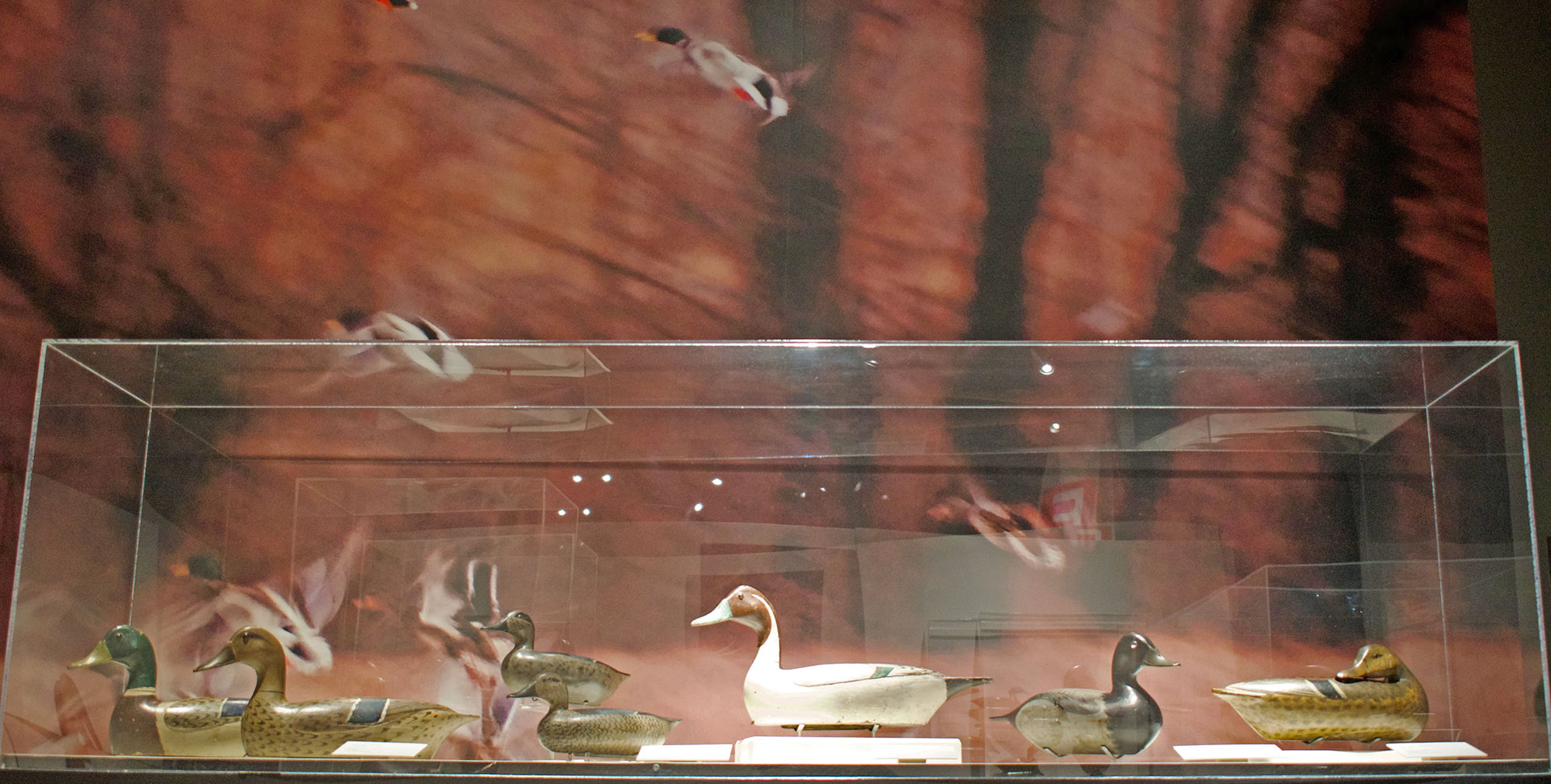
Photo by Joe Genzel
It’s well known among collectors that countless decoys were lost during the Depression. They were burned as firewood to keep struggling families warm during the frigid Illinois winters. Many hunting clubs also burned their decoys once plastic floaters became available, no longer seeing the value in keeping wooden rigs around. Old decoys were also stored away in barns or under houses and left to rot.
During the late 19th century and early 20th century, hundreds of carvers made wooden decoys for IRV market hunters and sportsmen, but only a handful of those carvers are remembered as true talents. Thankfully, at least some of their decoys were well maintained and made it into the hands of private collectors and museums. Some of the most pristine examples produced by Elliston, Schoenheider, Graves, Perdew, and Walker live on at the Center for American Decoys.
“Wooden decoys tend to have a regional theme,” says Cameron McIntyre, a modern carver in Virginia who still uses many of the same tools the old IRV decoy makers did. “One carver or a group of carvers comes up with a style and everyone kind of follows it. Illinois River decoys are much like the ones that were made in coastal New Jersey and Delaware.
“Hunters found that the more decoys they could pack, the more birds were attracted. That’s why the decoys were hollow. Hunters went out in small boats, so the lighter the decoy, the more they could haul into the river.”
Here’s a closer look at the “Big Five” IRV decoy carvers.
Robert and Catherine Elliston (1849-1915)
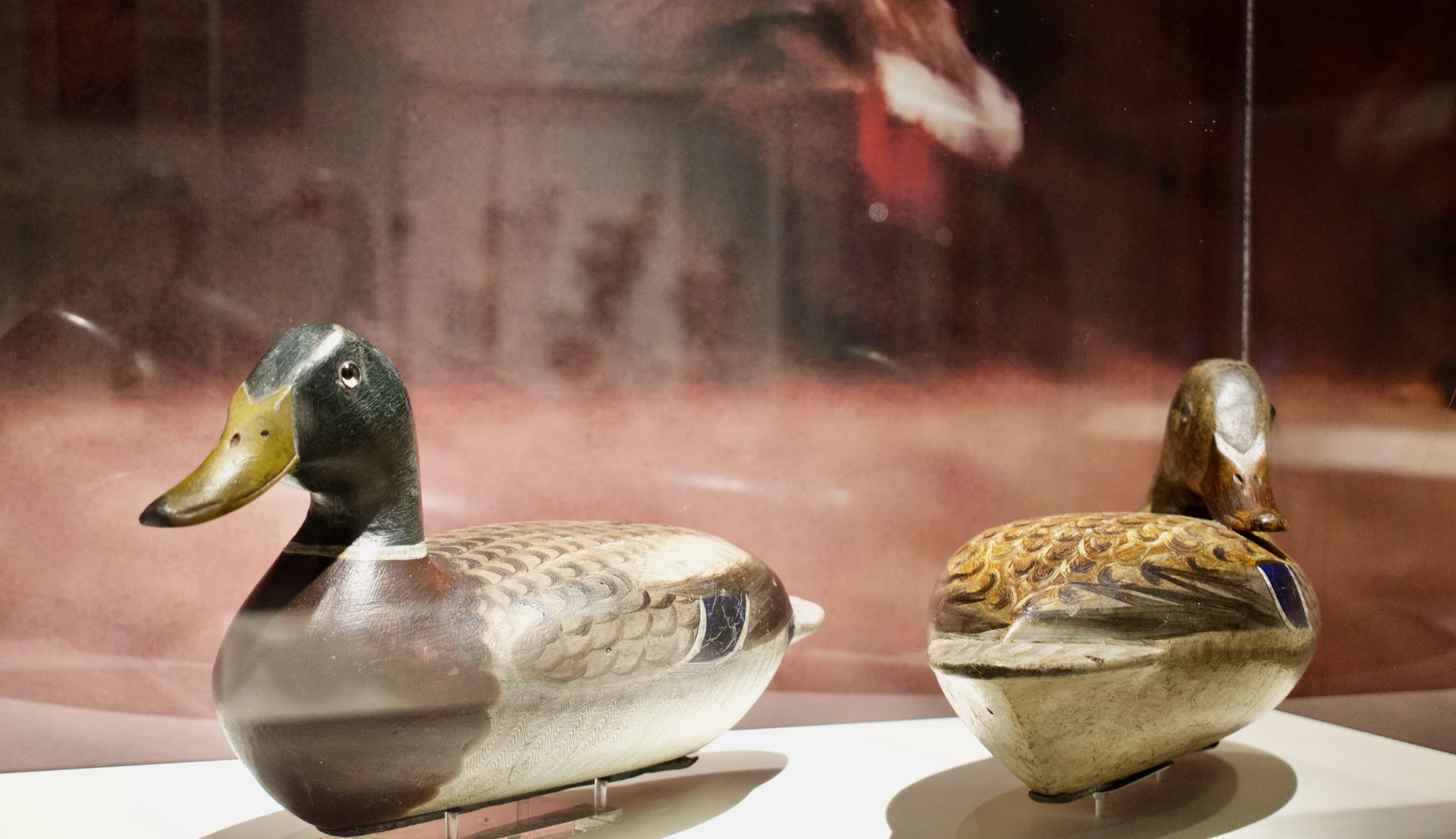
Photo by Joe Genzel
If there is a godfather of IRV decoys, it’s Robert Elliston. He and his wife, Catherine, are credited with developing the Illinois River-style decoy, which consists of a hollowed-out bottom and top piece (to decrease weight) with a separate head.
Catherine painted the decoys. She also taught Millie Graves, the wife of Bert Graves, how to paint. The Ellistons sold their decoys at the Undercliff Hotel on Senachwine Lake near Putnam (about two hours southwest of Chicago). Wealthy hunters from Chicago visiting Senachwine Lake were the first buyers of Elliston’s decoys.
Robert Elliston carved drake and hen blue- and green-winged teal, mallards, and pintails. His scaup, canvasbacks, redheads, ringnecks, and wigeon were drakes only. He also fashioned geese but stopped making them, as well as sleeper and preening duck decoys, because he could not keep up with orders.
Catherine mixed her own paints and often used real ducks (many of which she later cooked for dinner) as a template while painting her husband’s wooden fakes. After Robert died in 1915, Catherine sold the business to Bert Graves, whom she painted for.
Charles Schoenheider Sr. (1854-1944)
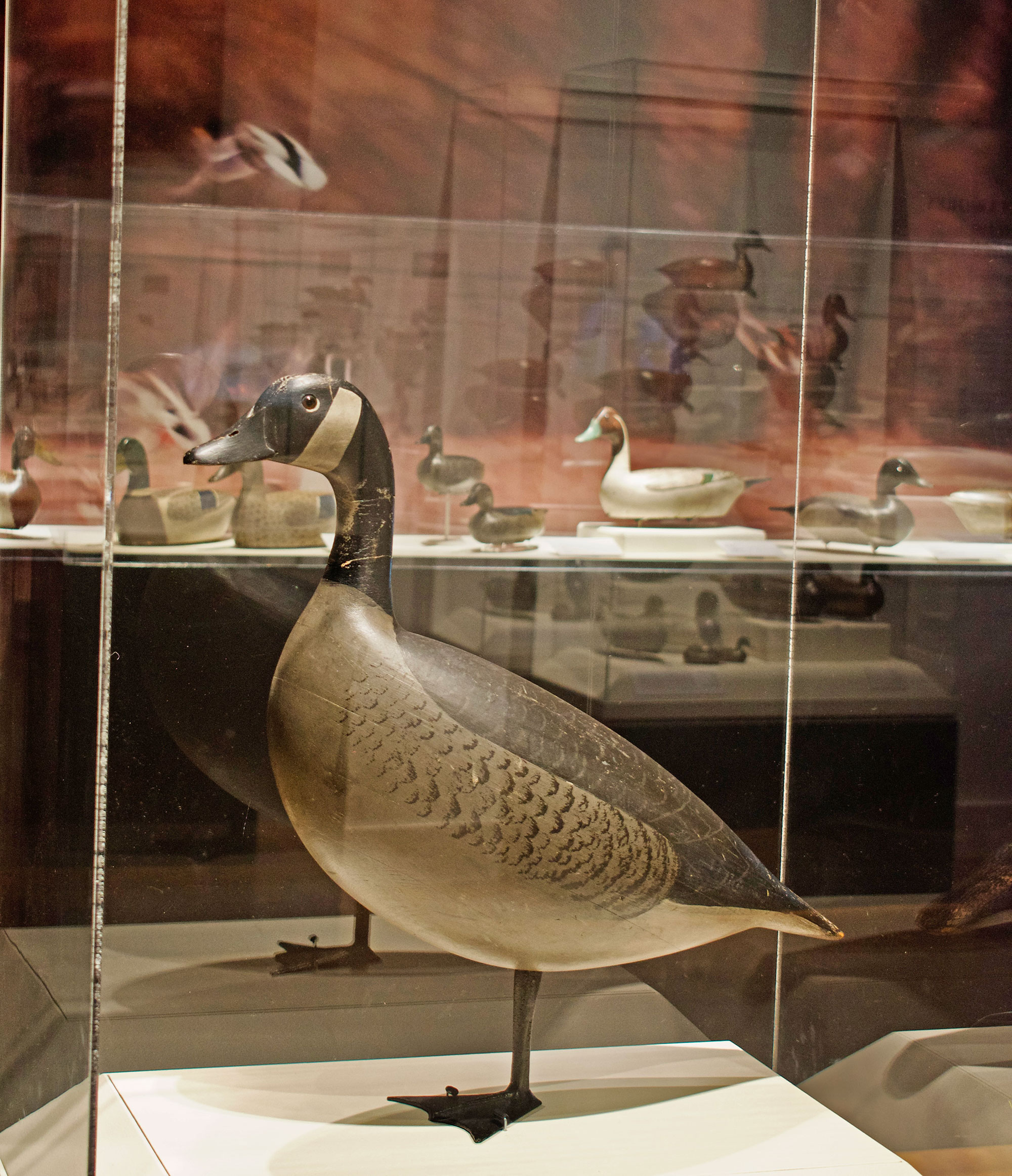
Photo by Joe Genzel
A market hunter and carver from Peoria, Schoenheider is best known for his standing ducks and geese. He built an iron leg into the bottom of the decoys so the wooden fakes would stay upright. There is a rig of 10 standing Canada geese and one or two floaters — depending on the collector or curator you talk to — made by Schoenheider still in existence (one of the Canadas is on display at the Riverfront Museum). They are highly coveted by collectors due to the unique design of the decoys and the story behind them.
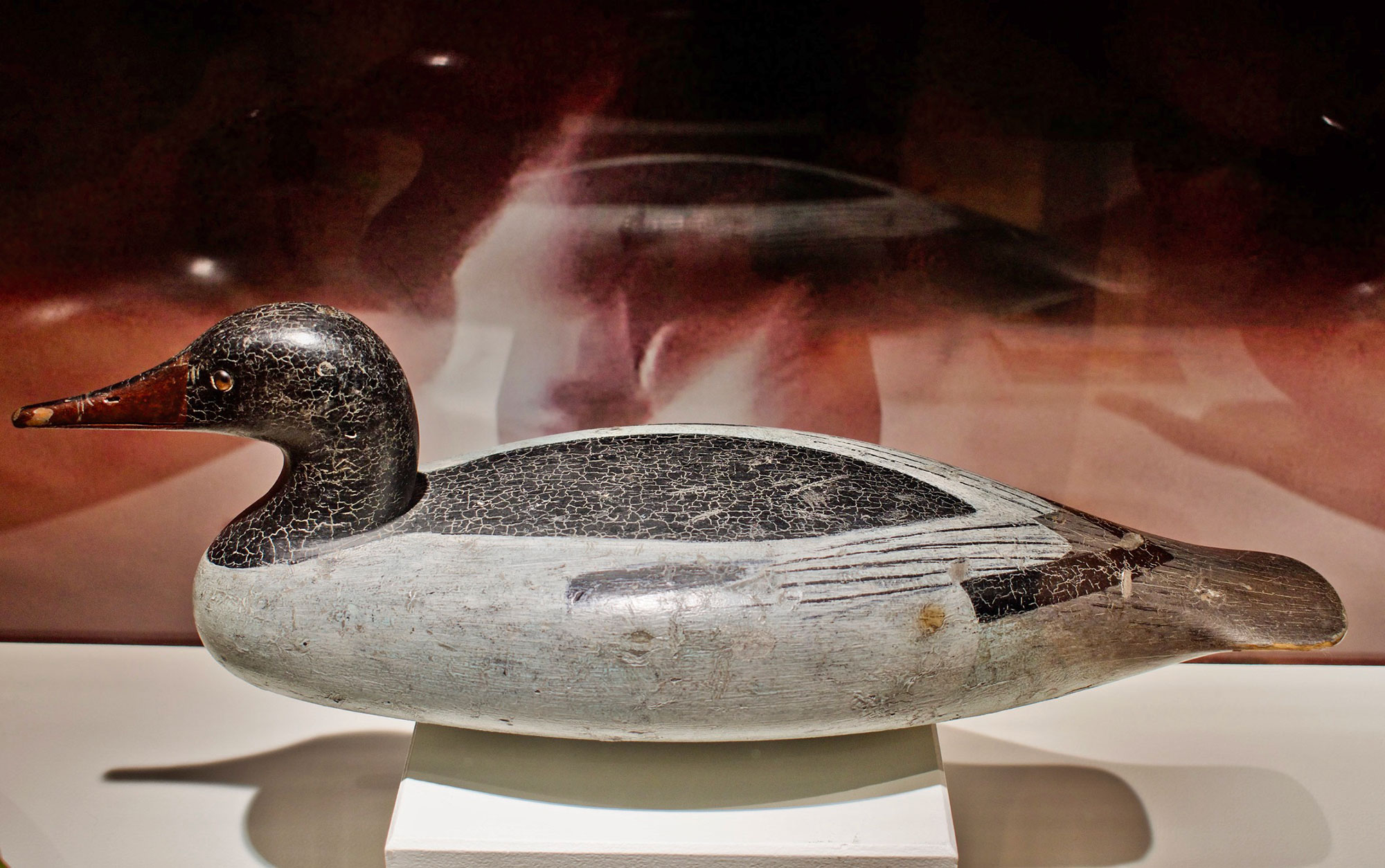
Photo by Joe Genzel
In 1918, Daniel Vorhees commissioned the 12 decoys. When Schoenheider requested $125 for the dozen, Vorhees would not pay up (that’s the equivalent of about $2,740 today). Instead of selling to another buyer, Schoenheider stored the rig in his attic where it sat until he died. Vorhees did locate another carver, Michael Vallero, to build the 12 standing goose decoys found at his hunting camp many years later.
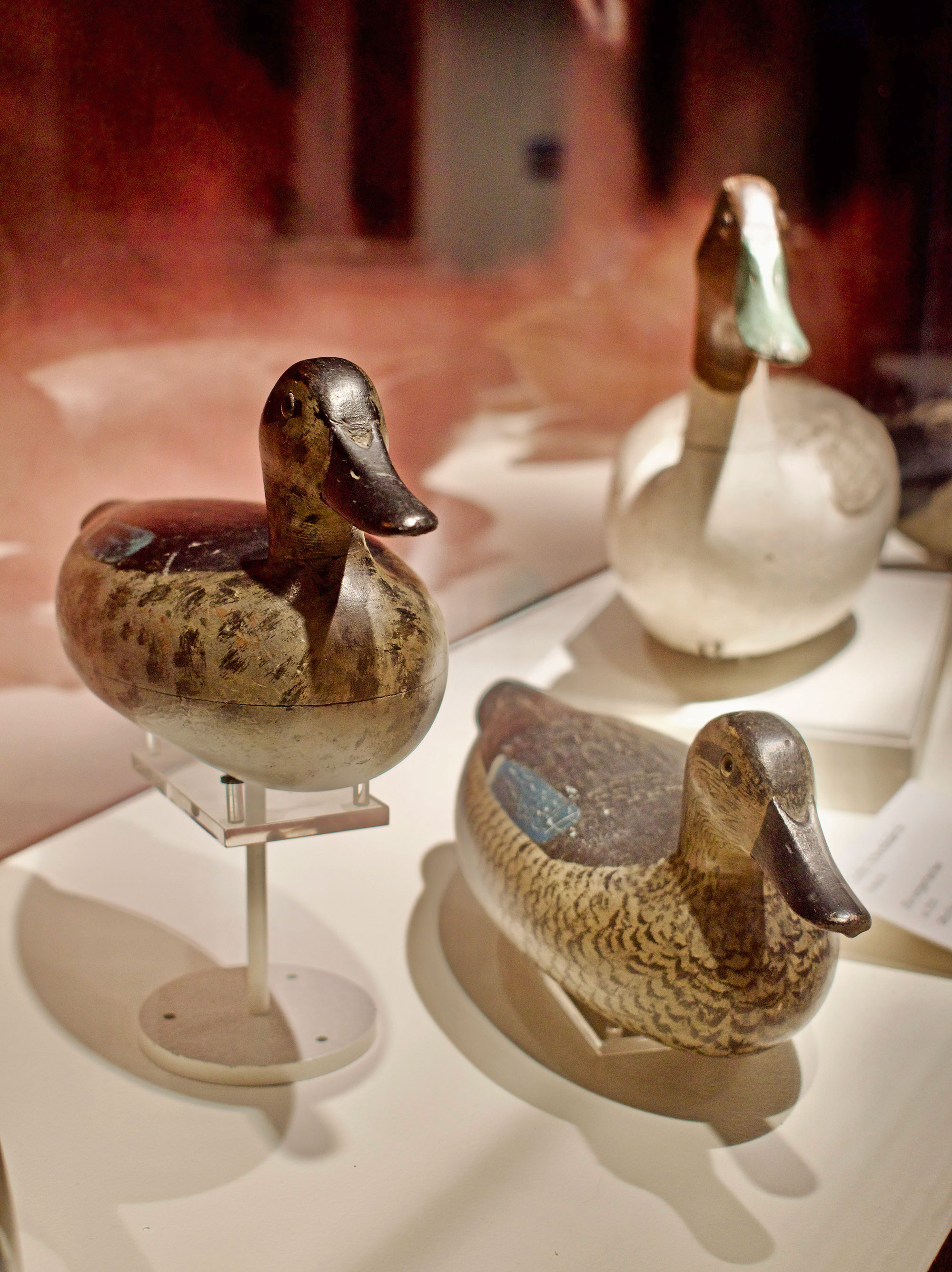
Photo by Joe Genzel
“When Schoenheider went to Vorhees for payment, he was asking about $10 per decoy,” Zetterberg said. “But when Vorhees balked, the decoys sat collecting dust for decades. Now they are worth far more than $10 each. Within the last few years, one sold for $160,000 and others have gone for as much as $200,000.”
Bert Graves (1887-1956)
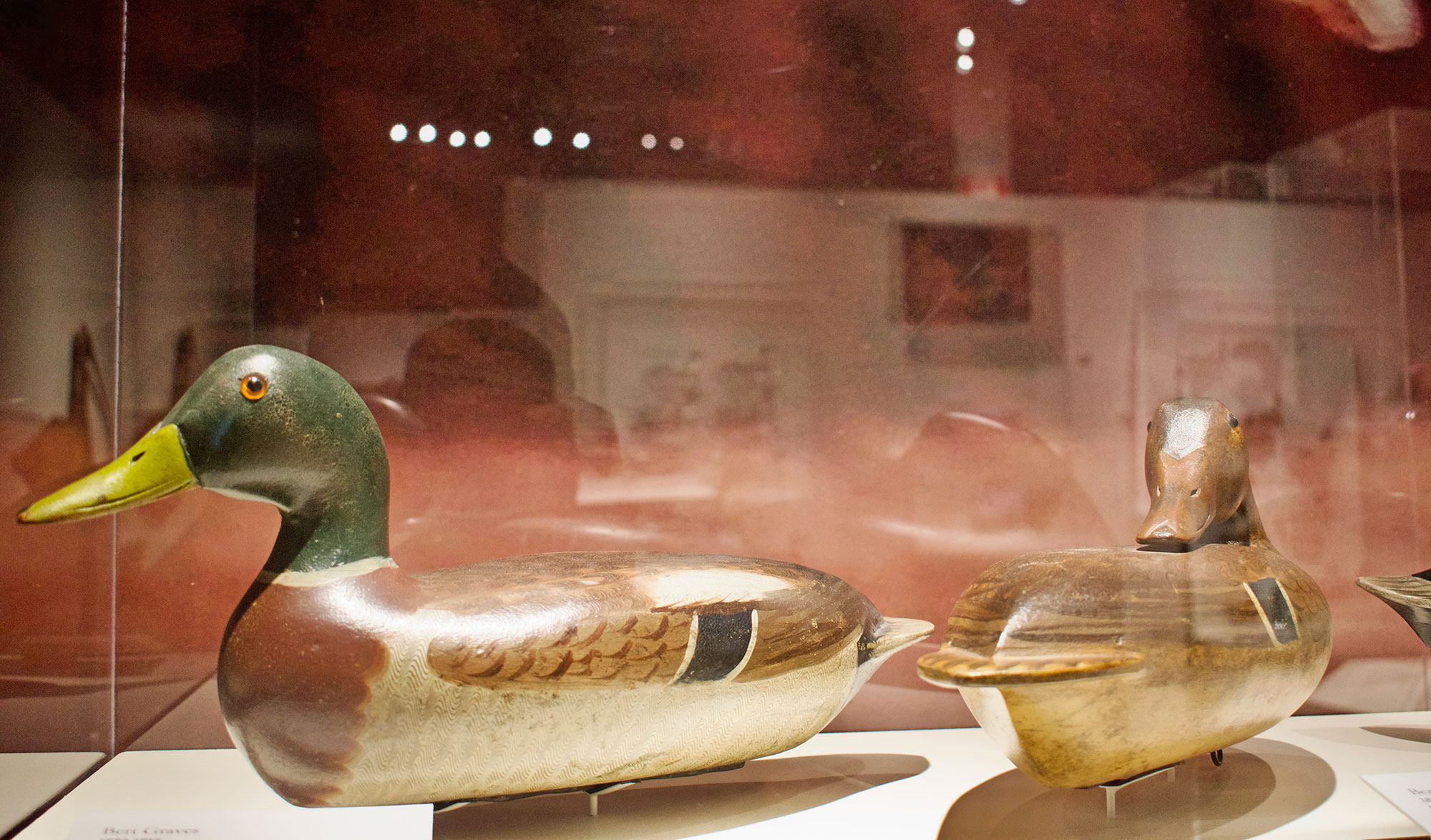
Photo by Joe Genzel
The spirit of the Ellistons’ decoys lived on in Peoria carver Bert Graves, a carpenter and policeman-turned-decoy maker who bought the business from Catherine Elliston. Graves copied Elliston’s patterns but did inject some of his own style, namely the glass eyes that were set slightly lower on the duck head. Pairs of canvasbacks and pintails along with drake mallards, black ducks, and Pacific brant were the focus of his carvings. Graves began making decoys in the early 20th century, charging $70 to $100 per dozen. In 2006 a pair of Graves’ oversized mallards were sold at auction for $218,500.
Like Elliston, Graves did not paint his own decoys. That work was done either by his wife, Millie, or Catherine Elliston. Some lead weights of Graves’ early decoys were stamped with “B.G.” As he became more well known, “B. GRAVES DECOY CO. PEORIA ILL” was inscribed on the weight secured under the decoy.
Charles Perdew (1874-1963)
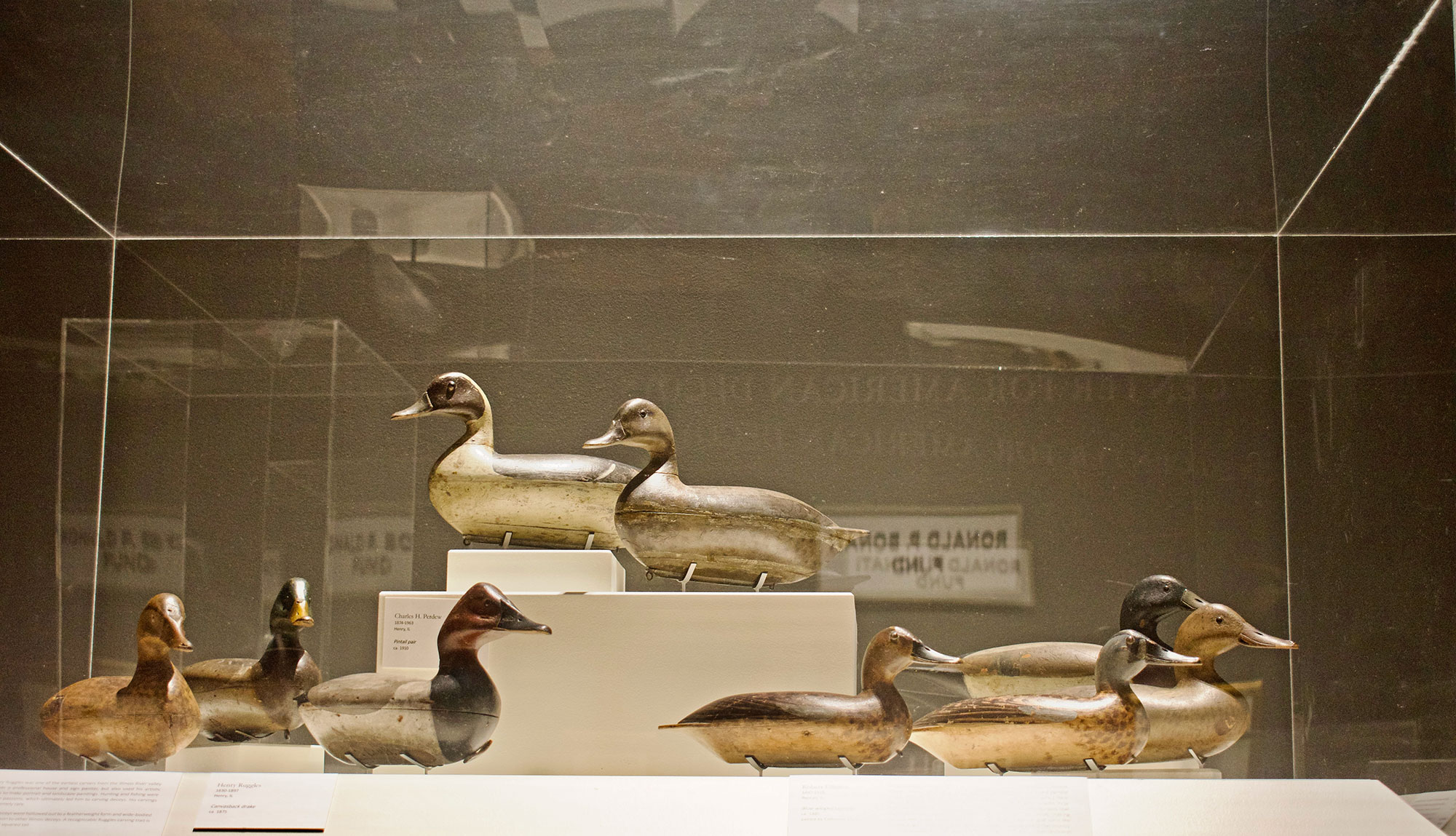
Photo by Joe Genzel
A young Charlie Perdew was one of the few people Robert Elliston ever allowed to watch him carve — Elliston did not like anyone looking over his shoulder while he worked. At the age of 14, Perdew began to fashion his own wooden decoys and would go on to carve other bird species, as well as make his own duck calls. He could fix just about anything, including guns (Perdew had his own shop for a time) and bikes. Perdew, who built his home in Henry with stones from the Illinois River, was also a market hunter until the Migratory Bird Act of 1918.
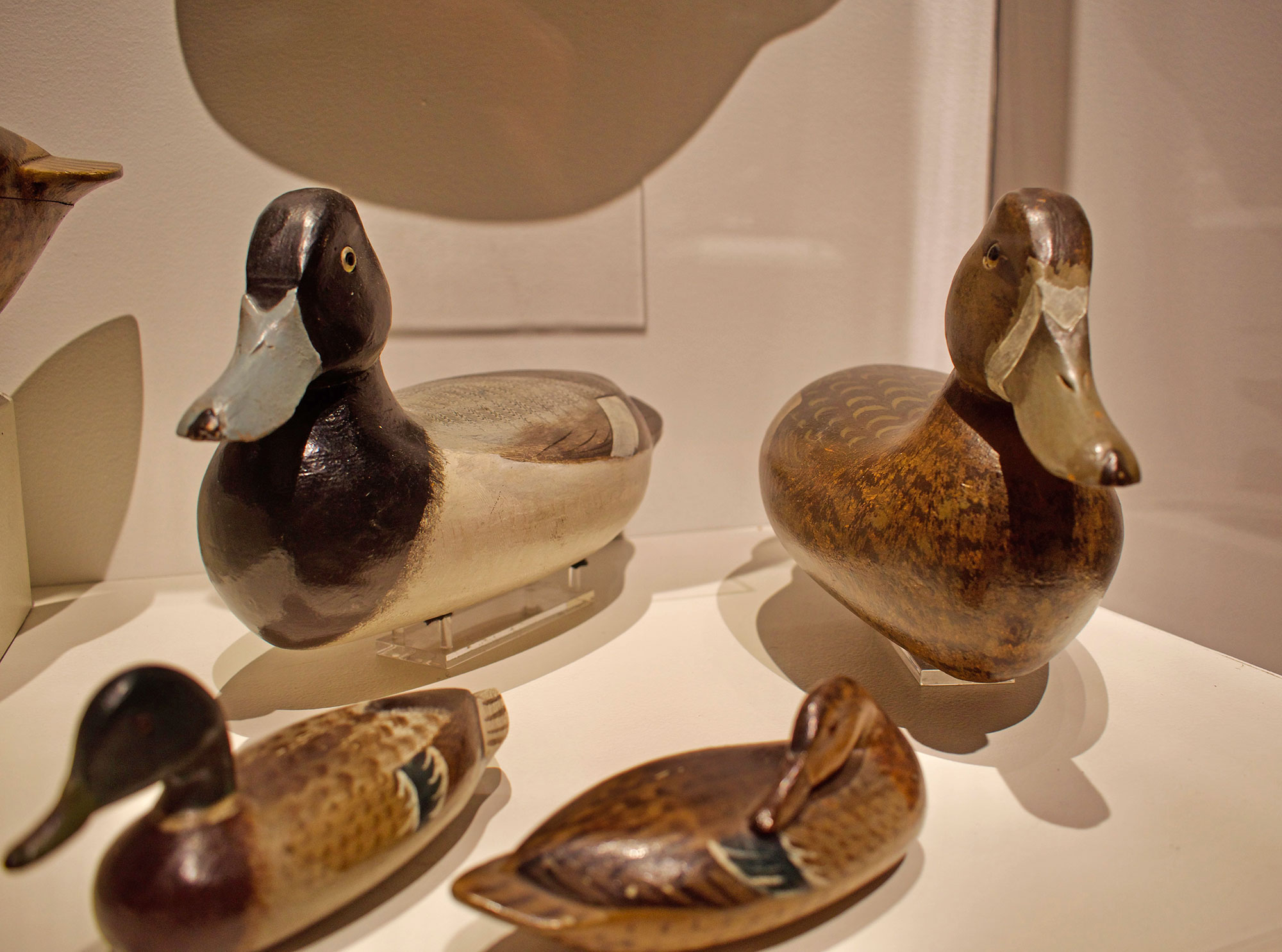
Photo by Joe Genzel
“The demand for alluring decoys by hunters at the clubs along the Illinois River skyrocketed after the MBA was passed,” Zetterberg says. “Perdew was the guy. When you think of Illinois carvers, Perdew is the iconic name most gravitate to. He and his wife, Edna, who learned to paint from Catherine Elliston, also have a great story. I mean they essentially made a life together because of decoys — he carved, she painted them.”
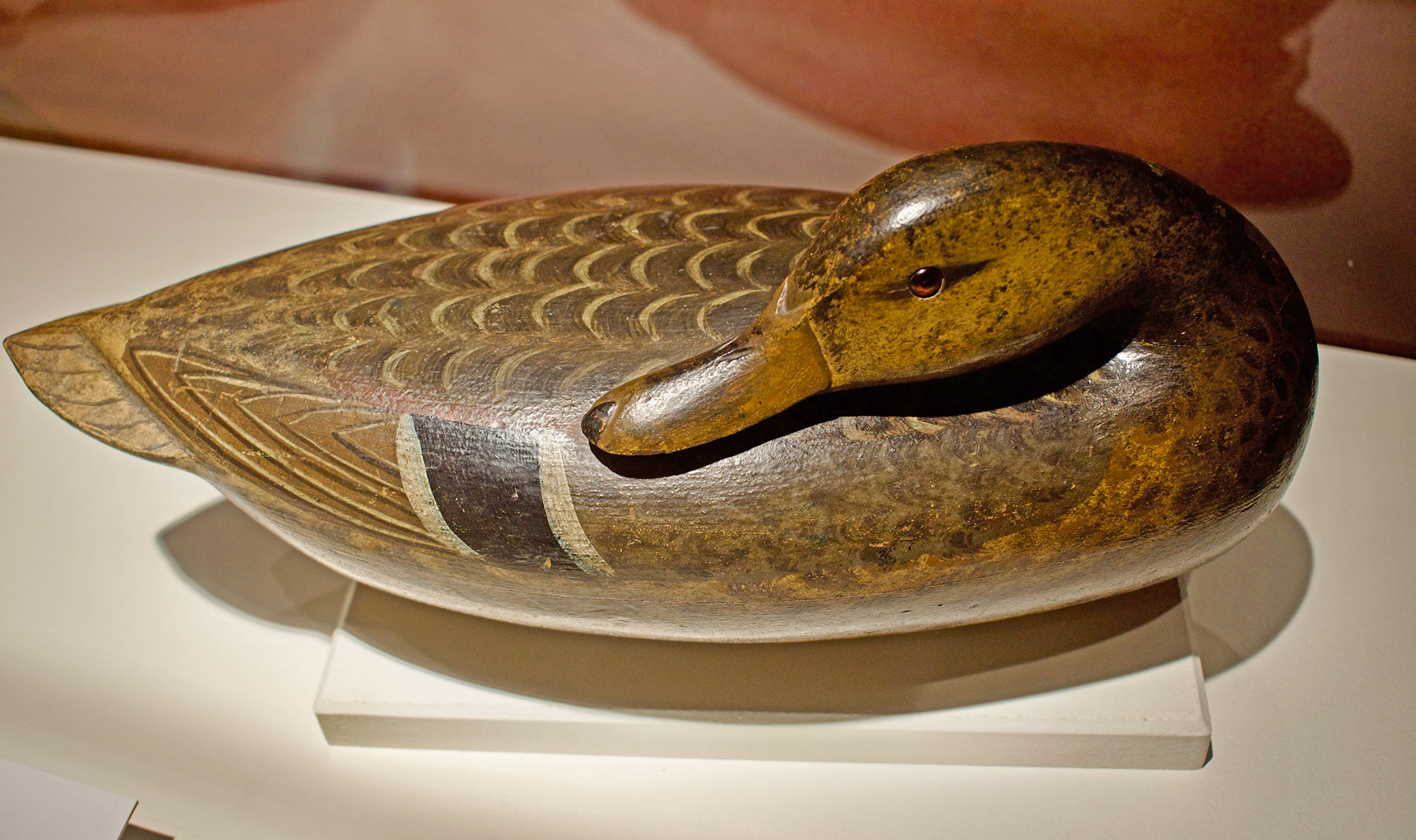
Photo by Joe Genzel
Timing certainly played a factor in Perdew’s success. He was still making wooden decoys as plastic decoys came into existence. Also, Perdew floaters were the everyday decoys of many sportsmen, so they were more likely to be in use at that time. In 2007, one of his most prized decoys, a sleeping hen mallard, was sold at auction for $252,000.
Charles Walker (1876-1954)
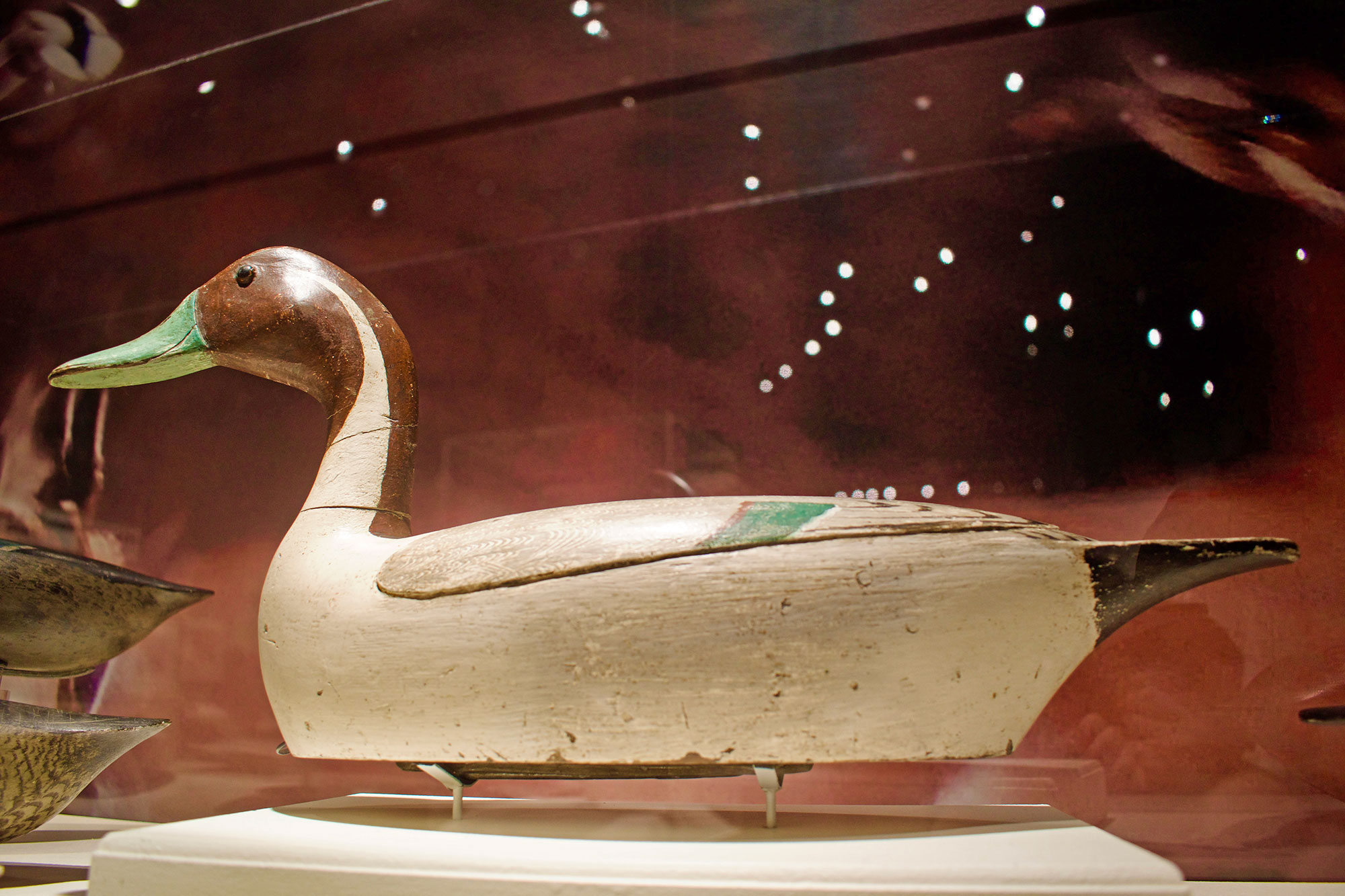
Photo by Joe Genzel
Walker’s contribution to IRV decoy carving is slightly different than the other four men on this list. He was a house painter and decorator who crafted decoys exclusively for the Princeton Game and Fish Club in Bureau County. His decoys had high heads and sleek bodies. Walker painted all of his own decoys with commercial kits using a graining comb to add texture to the exterior of the two-piece hollowed bodies. He also occasionally painted other carver’s decoys.
Mallard pairs and pintail drakes made up the majority of Walker’s decoy rigs, but he also fashioned canvasbacks and green-wing teal. Since carving was not Walker’s main source of income, he only made between 1,000 and 1,500 decoys, charging $30 to $100 per dozen. Walker produced two to three dozen decoys at a time with tools made by his grandfather. Each has its own features, such as delineated wings, flat bottoms, or round bottoms, to make it unique from previous rigs. Though most of Walker’s decoys were used for hunting, he did carve several miniatures as gifts.
The Expansion at the Center for American Decoys
In the next year, the space currently housing the decoy collection will expand to accommodate anywhere from 100 to 150 decoys, many of which remain in storage at the Riverfront Museum. With the help of Root and other philanthropists, Zetterberg’s goal is to continue to showcase world-class decoys from some of the most respected collections and prestigious institutions in the country. But the Illinois River Valley carvers will remain at the center of the exhibit as a reminder of the cultural influence men and women like Charles and Edna Perdew had on the region and the river that cuts through it.
“These decoys were once thought of as utilitarian objects to attract waterfowl, but they turned out to be pieces of art because many of them were so well done,” Root says. “When you see them as a whole it’s incredible the unique styles each carver had and the differences in detail from one decoy maker to the next.”

